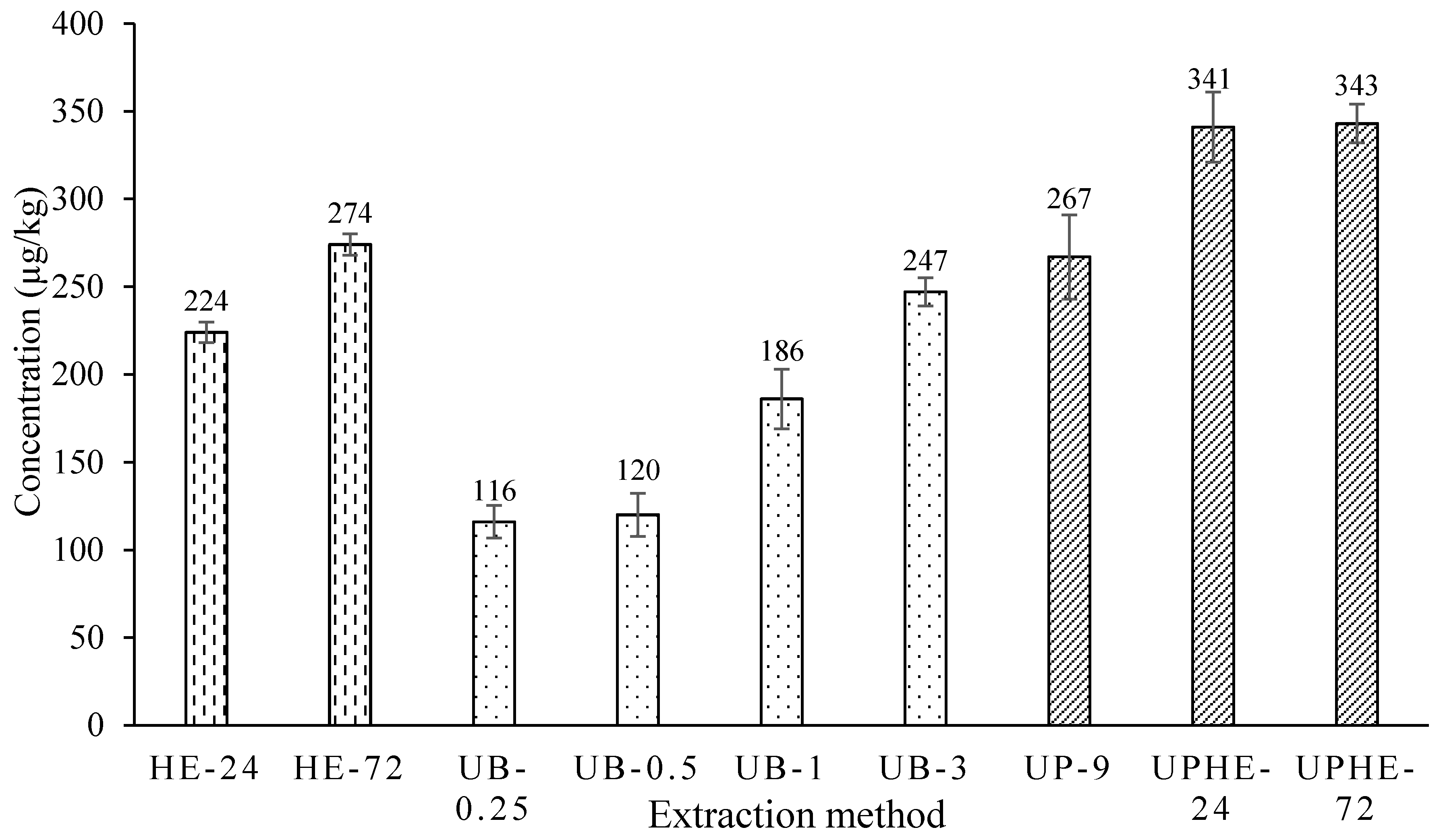EPA Method 3620C
Dichlorodiphenyltrichloroethane (DDT) residue in Ontario soil is expected to be found at trace levels, since it has been banned for over 45 years in Canada. This presents challenges to the efficiency and accuracy of conventional detection methods. This study intensified the conventional DDT detection method, in the characterization of aged soil samples collected from historically-treated sites in Ontario. Recovery, time consumption, and labor intensity were considered for the intensification evaluation. Ultrasonic probe extraction was found to significantly shorten the extraction time, with similar yield compared to ultrasonic water bath extraction and homogenized extraction.
Homogenized extraction for 24 h following ultrasonic probe extraction can increase yield over 27%. Rotary evaporator concentration was used, since it can reduce the operating time with comparable recovery. The Florisil clean-up column used in the conventional method was removed from the intensified method, due to its negligible effect and high time consumption. The intensified method may be valuable for further investigation to determine other trace level organochlorine pesticide residues in soil samples.

There are no products listed under this category.